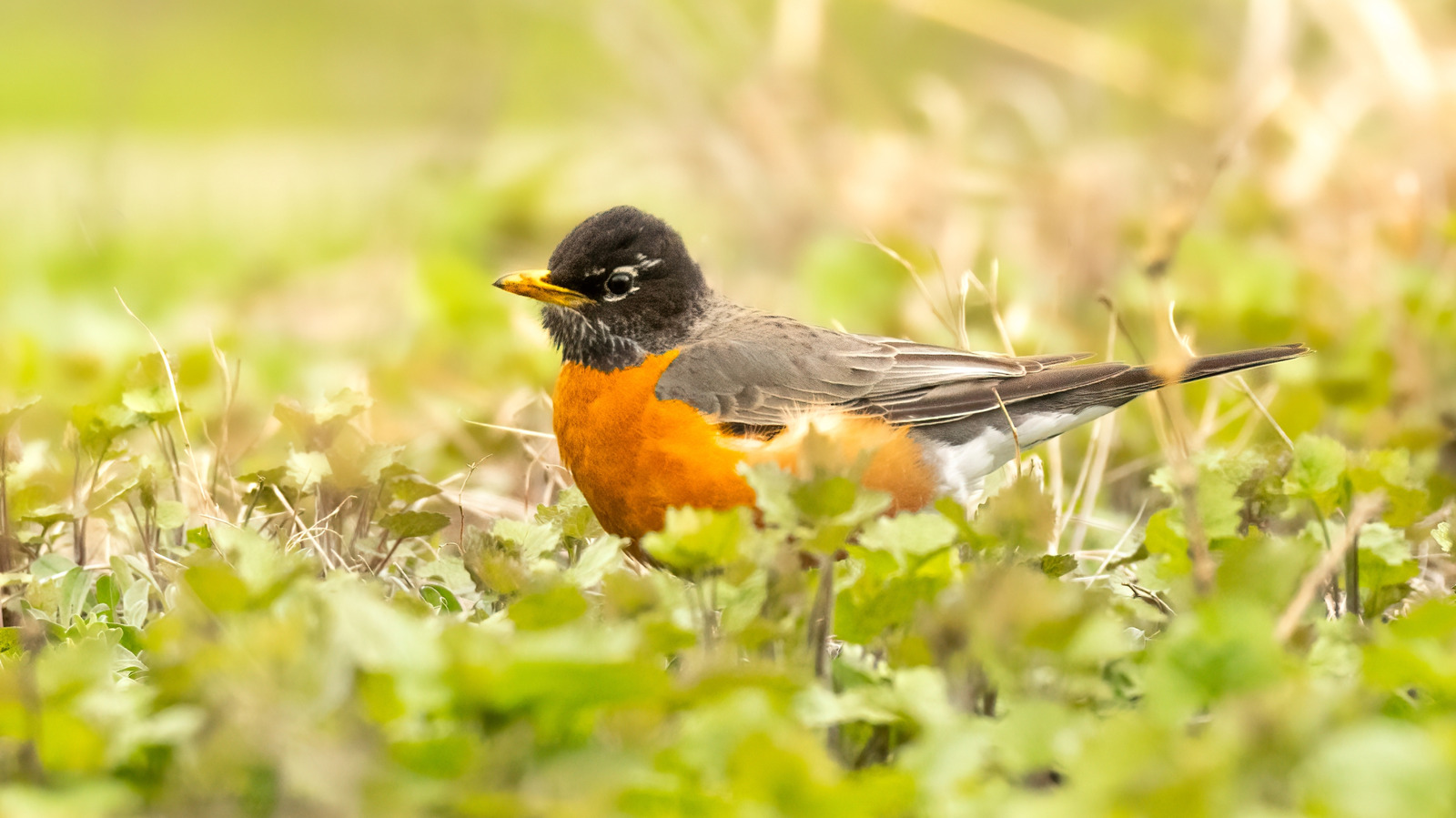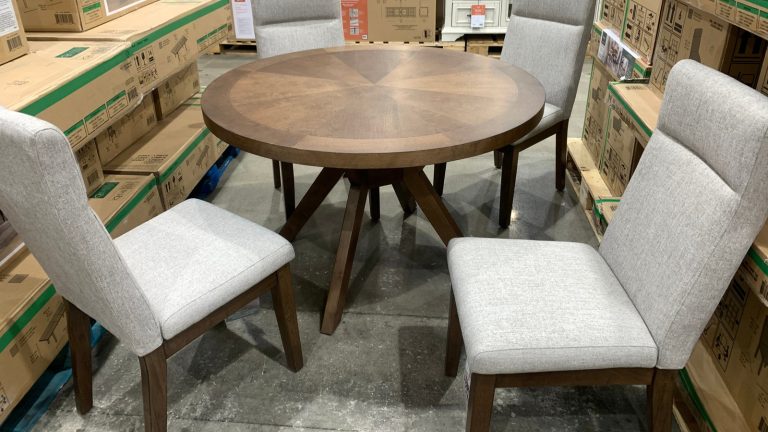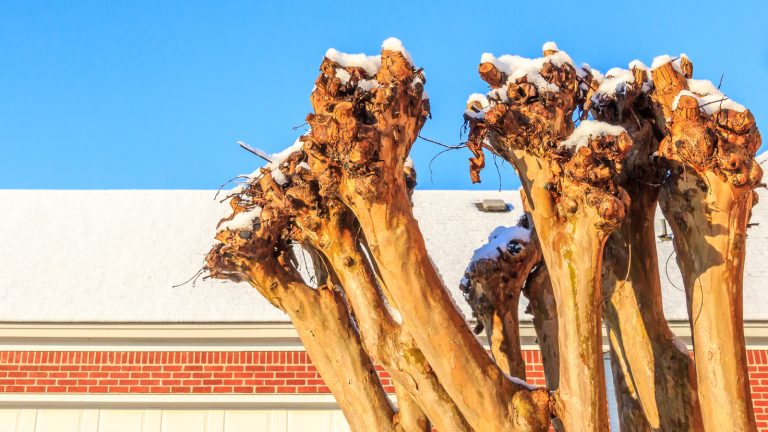
Owning a yard allows you to enjoy a diversity of bird species without visiting parks or trails. However, attracting these feathered guests depends on your yard’s appeal from a “bird’s-eye” perspective. Does it provide food, water, or shelter? Transforming part or all of your lawn into a bird-attracting ground cover is a straightforward way to enhance your yard’s allure. Options abound, ranging from chokeberry and switchgrass to creeping mahonia.
The best plants offer birds sustenance in the form of seeds, fruits, and insects. They also supply nesting materials, shelters from predators, and protection against harsh weather. In contrast, traditional mowed lawns typically lack these essentials, which makes bird visits less frequent if grass is all you have.
Ground covers offer additional advantages. They help combat erosion and generally require less maintenance than lawns, as they don’t need mowing and are more water-efficient. This is particularly true when you choose ground covers native to your region, which are ideal for year-round bird attraction. Native plants tend to provide critical food sources at times when birds need them the most and also host local insects and caterpillars, which some bird species rely on. An optimal bird-friendly yard incorporates a variety of native plants, including trees of varying heights, wildflowers, shrubs, and, importantly, ground covers.
Bunchberry
Bunchberry (Cornus canadensis), native to the northern U.S., grows to just 4 to 9 inches tall, making it a perfect and visually appealing ground cover for shaded areas under trees. Its white flowers bloom from May to July, attracting hummingbirds with their nectar. In August, bright red berries ripen, providing food for birds like martens, ruffed grouse, and vireos. Bunchberry is winter hardy in USDA zones 2 to 6, dying back to ground level in winter and regrowing in spring. This ground cover is not tolerant of foot traffic.
Creeping mahonia
Creeping mahonia (Berberis repens) is an evergreen ground cover growing to about 1 foot tall. It’s a resilient plant, drought-tolerant, and adaptable to various lighting conditions. Its early spring flowers and sour summer berries attract a variety of birds, including hummingbirds, juncos, sparrows, pheasants, waxwings, and robins. The berries are also suitable for making jelly. Creeping mahonia is cold hardy in zones 5 to 8.
Trumpet honeysuckle
Trumpet honeysuckle (Lonicera sempervirens) features stunning trumpet-shaped red blooms. Native to the southeast U.S., it is hardy in zones 4 to 9 but remains evergreen only in zones 8 and above. Although a vine, it can be allowed to sprawl across the ground, serving as a fast-growing ground cover that attracts hummingbirds and pollinators. Ruby-throated hummingbirds enjoy the nectar from its spring flowers, while robins, hermit thrushes, quail, and finches feast on the red berries appearing in fall.
Bearberry
Bearberry, also called kinnikinick, is an evergreen with charming white blooms and is native to the northern and western U.S. Low-growing forms like Arctostaphylos uva-ursi are used as ground covers, forming dense mats just a few inches high. Bearberry provides visual interest year-round, with evergreen foliage, white or pink flowers, and red berries that remain on branches into winter. It is cold hardy in zones 2 to 6 and thrives even in challenging spots with poor or sandy soil. Hummingbirds are attracted to the spring flowers, while fruit-eating birds enjoy the berries.
Cotoneaster
With around 400 species, Cotoneaster offers many low-growing forms suitable as ground cover, including creeping Cotoneaster (Cotoneaster adpressus) and Rock Cotoneaster (Cotoneaster horizontalis). The berries are highly nutritious and favored by birds such as blackbirds, waxwings, and thrushes. They ripen in late summer and remain available through winter. Some Cotoneasters are evergreen, while others shed leaves in winter. Generally, Cotoneasters grow quickly and need pruning in spring to prevent legginess. Their hardiness ranges from zones 4 to 10, depending on the species.
Virginia creeper
Virginia creeper (Parthenocissus quinquefolia) is a perennial vine native to the eastern U.S. and Great Plains. It resembles poison ivy but has harmless leaves (though the fruits are inedible for humans). Its blue-black, fat-rich berries are popular with fall-migrating birds and serve as crucial winter food. Birds like cedar waxwings, bluebirds, robins, warblers, mockingbirds, woodpeckers, and nuthatches are known to feast on them. Virginia creeper is hardy in zones 3 to 10 and can be an aggressive grower, requiring regular vine trimming.
Lingonberry
Lingonberry (Vaccinium vitis-idaea) is a favored ingredient in many cuisines and attracts numerous birds, including geese, ravens, grouse, mockingbirds, robins, thrushes, scarlet tanagers, eastern bluebirds, and more. Its broad appeal has earned it various nicknames like cowberry, foxberry, and cougarberry. In cooler regions with snow, it can function as groundcover up to 1 foot tall, though it does not tolerate foot traffic. Lingonberry is hardy in zones 3 to 7.
Northern sea oats
Native and wild grasses make excellent ground covers for attracting birds, as their seeds provide food, the grass offers nesting shelter, and birds forage for insects underneath. Consider Northern sea oats (Chasmanthium latifolium), a shade-tolerant grass that grows 2 to 5 feet tall and is hardy in zones 5 to 9. Its attractive bluish-green blades turn golden in fall, and the oat-like flowers are perfect for bouquets. This grass can be weedy and aggressive, so upkeep is necessary.
Switchgrass
Switchgrass (Panicum virgatum) is another native grass, hardy in zones 5 to 9. It grows throughout the U.S. and adapts to a variety of soil types, offering year-round appeal. Its lovely pink flowers bloom in late summer, and the seedheads turn red or purple in fall. Since the grass remains upright in winter, birds use it for shelter and feed on the seeds. Birds attracted to switchgrass include mourning doves, American woodcocks, cardinals, and various sparrows.
Little bluestem
Little bluestem (Schizachyrium scoparium), another native grass, is so beloved by birds that Audubon North Carolina describes it as a “living bird feeder.” Found throughout the U.S., it is hardy in zones 3 to 9 and tolerates a variety of soils as long as they are not overly wet or dry, and the site offers plenty of sunlight. Its blue-green blades grow up to 3 feet tall, and the fall-ripening seeds sustain birds through the autumn and winter. Finches, towhees, grosbeaks, buntings, and cardinals are among the species that enjoy Little bluestem, which also provides nesting areas for field sparrows and common yellowthroats due to its characteristic clumps and fine blades at the base.
Lyreleaf sage
Lyreleaf sage (Salvia lyrata) is a versatile herbaceous perennial that thrives in various media, from gravel to clay soil, and withstands both drought and flood conditions. Growing 1 to 2 feet tall, it can tolerate mowing and foot traffic and remains green year-round. Its ripe seeds attract American goldfinches and mourning doves, while its blue-purple, nectar-rich flowers entice hummingbirds in spring and early summer. Moreover, it deters deer and rabbits, which dislike its taste. Lyreleaf sage is native to the eastern and central U.S. and is hardy in zones 5 to 8.
Purple passionflower
Purple passionflower (Passiflora incarnata) is a trailing vine native to the eastern U.S., renowned for its flowers and its potential as a unique, blooming ground cover. Blooming in summer and early fall, it offers nectar to hummingbirds and produces fruits in fall that orioles, warblers, and finches enjoy. The fruit is also edible to humans and can be made into jelly. Passionflower is hardy in zones 5 to 9 but can be invasive in the Southeast U.S., requiring control by removing suckers.
Black chokeberry
Black chokeberry (Aronia melanocarpa) is a deciduous shrub native to the eastern U.S. For a low-maintenance, striking ground cover with year-round interest, select low-growing varieties like ‘Ground Hug’ dwarf chokeberry or ‘Low Scape Mound’ chokeberry. These plants offer flowers in late spring, red leaves in autumn, and berries that last through winter. Although the berries are edible, they are very tart, earning the plant its name. However, birds including cedar waxwings, bluebirds, gray catbirds, and chickadees relish them in late winter. Black chokeberry is hardy in zones 3 to 8.






